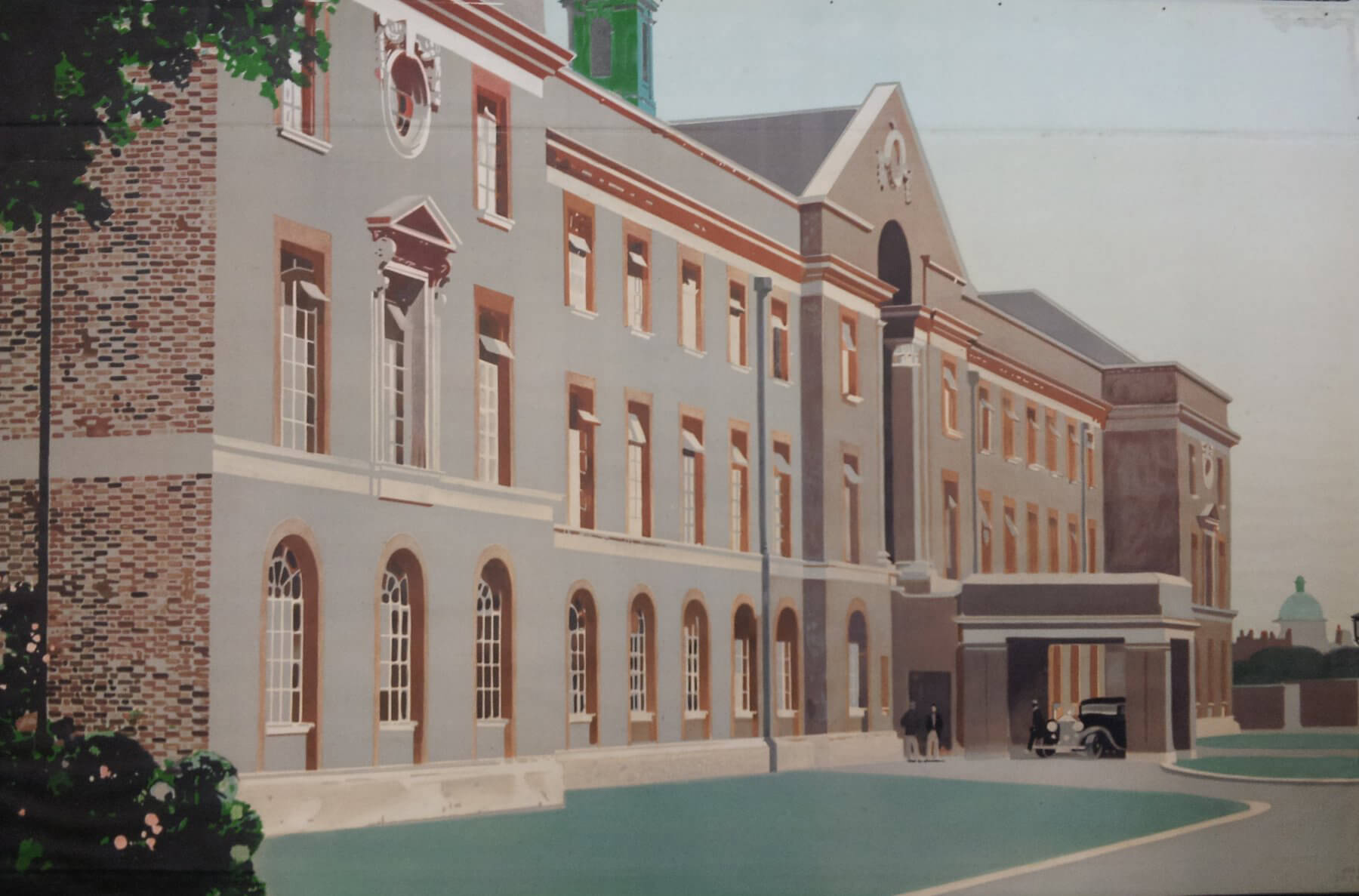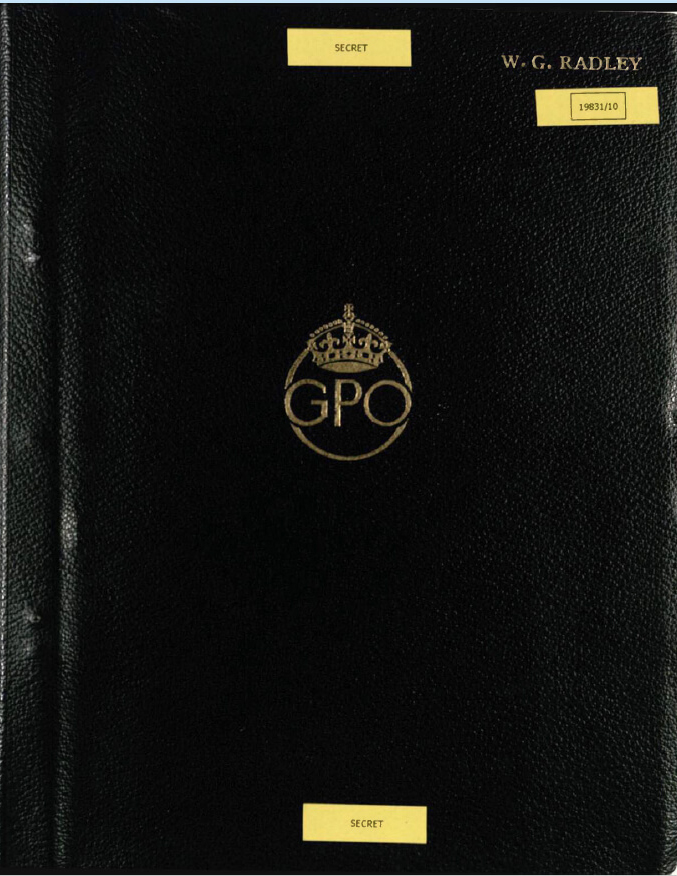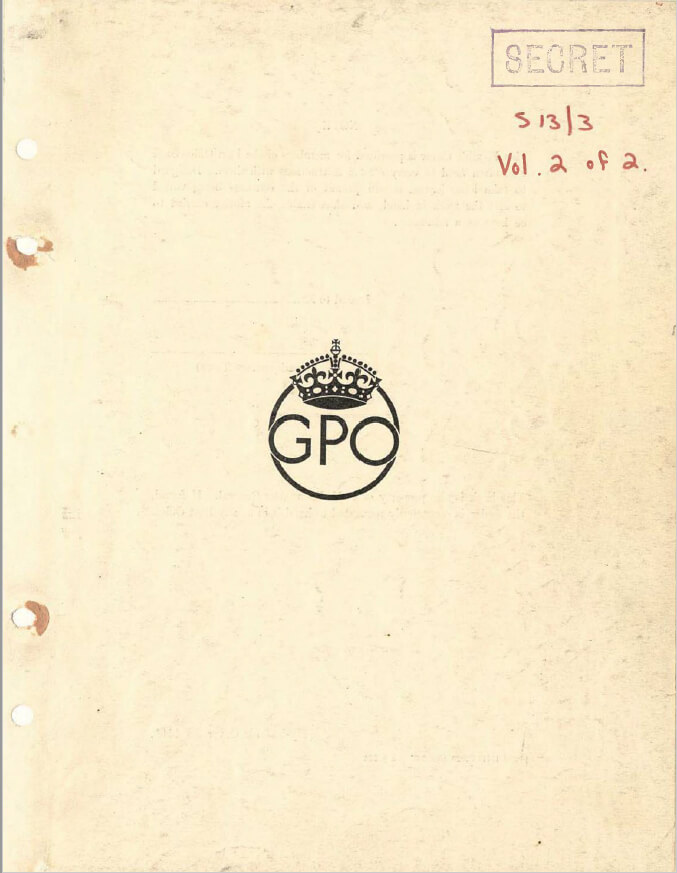During World War II, medical, scientific, and technological research came on in leaps and bounds. Our predecessor, the General Post Office (GPO), played a huge part in the advances in the development of radio, sound recording, and code breaking equipment – including the Colossus machines, famously used at Bletchley Park.
This work was recorded in a diary by WG Radley, Director of the Research Branch - dating from the outbreak of the war, right up to the end. It notes the advancements, breakthroughs, and successes of the research, and in the implementation of the equipment built at Dollis Hill, north London. It casts new light - and reveals more detail - on the huge amount of research achieved by the GPO Engineering Department’s Research Branch during the war.
The diary was formally declassified in 2019 (apart from a few short passages which remain closed), transferred to the BT Group Archives, and is now ready for researchers, teachers, and history enthusiasts alike to get their teeth into.
In this 1958 film, the author of the Diary, Sir Gordon Radley, wartime Director of the Research Branch and later Director General of the Post Office, reflects on his remarkable career. His wartime work was still classified at the time of the recording and so is only very briefly mentioned.

Bletchley Park podcast
One of the Post Office Research Branch's major customers in the Second World War was the Government Code & Cypher School at Bletchley Park. The engineers at Dollis Hill played an important role in the development of famous codebreaking machines, such as the Bombes and Colossus.
In this podcast, James Elder, an archivist from BT Group Archives, and Bletchley Park Research Historian, Dr David Kenyon, discuss what information the diaries can reveal about this secret collaboration.
It’s all here for you to peruse. You can either read and download the diary in its ‘original’ typed and handwritten format or study the searchable transcription.
-
The outbreak of war
-
Work for the codebreakers at Bletchley Park
-
A variety of tasks for the Armed Forces and the War Office
-
Eavesdropping
-
The end of the war
Since 1921, the GPO’s Engineering Branch had run a separate Research Branch out of Dollis Hill, north-west London. In 1939, the Branch employed 397 people, including over 50 engineering, physics, and chemistry graduates – all of whom were to play an important role during the war.
This group included WG Radley, head of the Research Branch. He later became, as Sir Gordon Radley, the Director General of the Post Office from 1955-1960. It’s thanks to him that we have such an in-depth description of the daily life and work that took place at Dollis Hill.
The diary itself runs to 360 pages over two volumes and provides reports of all war-related projects undertaken by the Research Branch. In most cases they are typed, but where they were particularly sensitive, Radley hand-wrote them rather than entrusting them to a typist.
Because of its subject matter, the diary was marked Secret and remained so after the war. It resided in a safe at Dollis Hill and then at Martlesham Heath in Suffolk, after the Research Branch moved there in the 1970s.
The peacetime job of the Research Branch was ‘the solution of engineering problems arising in the day-to-day operation of the Post Office services; and undertaking scientific research designed to lead to the development of telecommunications plant, increased efficiency of operation and new facilities for the telephone subscriber’. For example, in the 1930s, the Branch designed and built the apparatus for the first speaking clock.
In 1933, the staff at Dollis Hill moved from ex-army huts to new, purpose-built accommodation. From this point forward, the Post Office Research Station was one of the most well-equipped and capable research institutions in central government. It not only had laboratories that were fully equipped for telecommunication research, but also a workshop, which could construct complex machinery if needed.
Subsequently, the Post Office Research Station became the BT Research Laboratories and, more recently, Adastral Park. It continues to be our main campus for research and innovation, focusing these days less on warfare, but on IoT, VR/AR/AI, and the power of 5G.


Photographs are either part of the BT Group Archives collection, are licensed stock images, are licensed under Creative Commons, or appear by kind permission of their respective copyright holders: Kenneth Flowers, Judith Hodsdon, the Imperial War Museum, the National Portrait Gallery and the Bletchley Park Trust.



